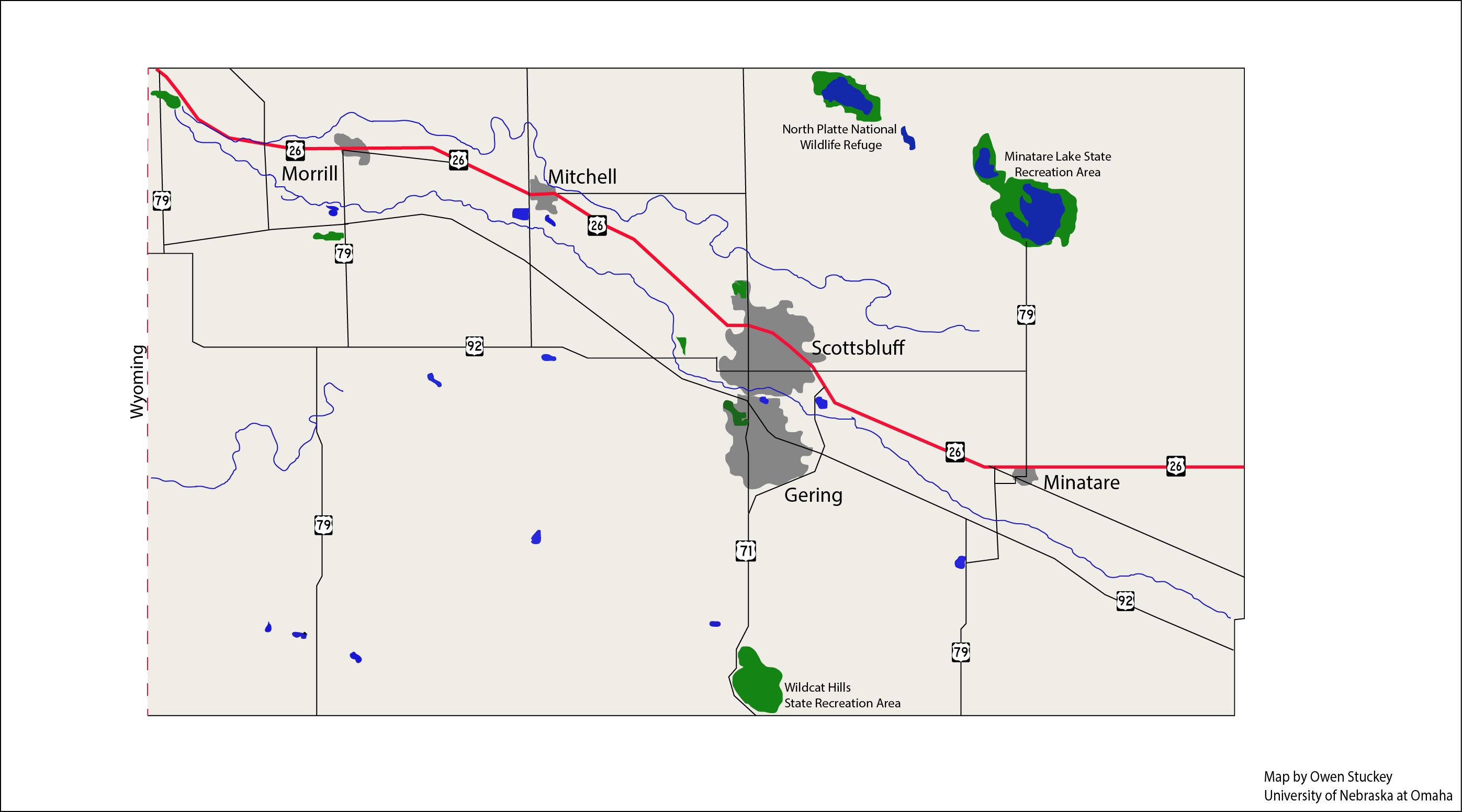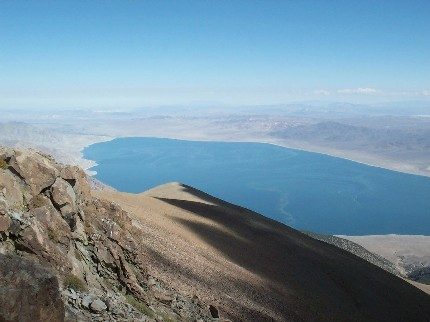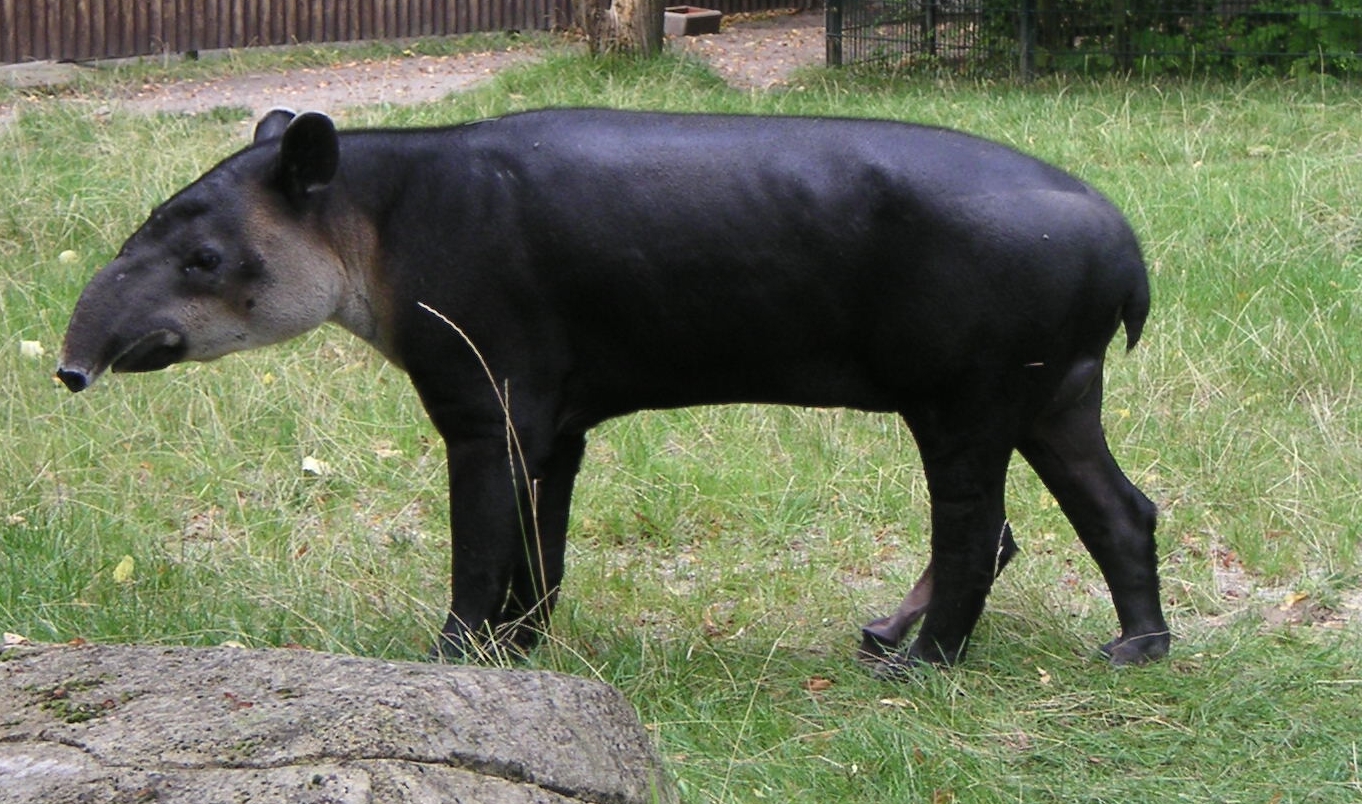|
Moropus
''Moropus'' (meaning "slow foot") is an extinct genus of large perissodactyl ("odd-toed" ungulate) mammal in the chalicothere family. They were endemic to North America during the Miocene from ~20.4—13.6 Mya, existing for approximately . ''Moropus'' belonged to the schizotheriine subfamily of chalicotheres, and has the best fossil record of any member of this group; numbers of individuals, including complete skeletons, have been found. The closest extant relatives of ''Moropus'' are other perissodactyls: horses, rhinos, and tapirs. Description Like other chalicotheres, ''Moropus'' differed from typical ungulates in having large claws, rather than hooves, on the feet. Three large, highly compressed claws on each front foot were supported inside by fissured bony phalanges, a structure similar to the large claws of ground sloths. The name ''Moropus'' translates to "slow (or sloth) foot", implying it was a clumsy mover. However, as with all schizotheriines, the articulatio ... [...More Info...] [...Related Items...] OR: [Wikipedia] [Google] [Baidu] |
Chalicothere
Chalicotheres (from Greek '' chalix'', "gravel" and '' therion'', "beast") are an extinct clade of herbivorous, odd-toed ungulate (perissodactyl) mammals that lived in North America, Eurasia, and Africa from the Middle Eocene until the Early Pleistocene, existing from 48.6 to 1.806 mya. They are one of the five major radiations of perissodactyls, with three groups living (horses, plus the extinct paleotheres; rhinoceroses; tapirs), and two extinct (brontotheres and chalicotheres). Description Unlike modern perissodactyls, chalicotheres had clawed feet. They had longer forelimbs and shorter hind limbs, lower incisors that cropped food against a toothless pad in the upper jaw, low-crowned molar teeth, and were browsers on trees and shrubs throughout their history. They evolved in two different directions, which became separate subfamilies, the Schizotheriinae and the Chalicotheriinae. Schizotherine chalicotheres such as '' Moropus'' lived in a variety of forest, woodlan ... [...More Info...] [...Related Items...] OR: [Wikipedia] [Google] [Baidu] |
Schizotheriinae
Schizotheriines are one of the two subfamilies of the extinct family Chalicotheriidae, a group of herbivorous odd-toed ungulate Odd-toed ungulates, mammals which constitute the taxonomic order Perissodactyla (, ), are animals—ungulates—who have reduced the weight-bearing toes to three (rhinoceroses and tapirs, with tapirs still using four toes on the front legs) ... (perissodactyl) mammals that lived from the Eocene to the Pleistoscene. The other clade is the Chalicotheriinae. Both clades had claws rather than hooves on their front feet, an adaptation understood as related to feeding. Schizotheriines also had claws on their hind feet. The fossils of both groups are found in environments that had trees and shrubs. While chalicotheriines developed very derived body forms, schizotheriines remained basically similar in shape to other perissodactyls such as horses and tapirs. Like most forest-dwelling ungulates, they had long necks and forelimbs longer than their hindli ... [...More Info...] [...Related Items...] OR: [Wikipedia] [Google] [Baidu] |
Perissodactyl
Odd-toed ungulates, mammals which constitute the taxonomic order Perissodactyla (, ), are animals—ungulates—who have reduced the weight-bearing toes to three (rhinoceroses and tapirs, with tapirs still using four toes on the front legs) or one (equines, third toe) of the five original toes. The non-weight-bearing toes are either present, absent, vestigial, or positioned posteriorly. By contrast, the even-toed ungulates bear most of their weight equally on four or two (an even number) of the five toes: their third and fourth toes. Another difference between the two is that odd-toed ungulates digest plant cellulose in their intestines rather than in one or more stomach chambers as even-toed ungulates, with the exception of Suina, do. The order includes about 17 species divided into three families: Equidae (horses, asses, and zebras), Rhinocerotidae (rhinoceroses), and Tapiridae (tapirs). Despite their very different appearances, they were recognized as related families ... [...More Info...] [...Related Items...] OR: [Wikipedia] [Google] [Baidu] |
Sucker Creak Formation
Sucker may refer to: General use * Lollipop or sucker, a type of confection * Sucker (slang), a slang term for a very gullible person * Hard candy ** Cough drop ** Mint (candy) Biology * Sucker (botany), a term for a shoot that arises underground from the roots of a tree or shrub * Sucker (zoology), various adhesive organs * Suckerfish (other) In arts and entertainment Film and television *''Suckers'', an animated television series by Spanish animation studio BRB Internacional * '' The Suckers'', a 1972 sexploitation film directed by Stu Segall * ''Suckers'' (film), a 1999 comedy-drama film directed by Roger Nygard * ''Sucker'', a 2011 horror film produced by Kimberley Kates * "Suckers", a 2003 episode of the fourth season of ''CSI: Crime Scene Investigation'' Books * '' Suckers: How alternative medicine makes fools of us all'', a 2008 book about alternative medicine written by Rose Shapiro Music * Suckers (band), a Brooklyn-based band * ''Sucker'' (album), a 20 ... [...More Info...] [...Related Items...] OR: [Wikipedia] [Google] [Baidu] |
Scotts Bluff County, Nebraska
Scotts Bluff County is a county on the western border of the U.S. state of Nebraska. As of the 2020 United States Census, the population was 36,084. Its county seat is Gering, and its largest city is Scottsbluff. Scotts Bluff County is included in the Scottsbluff, NE Micropolitan Statistical Area. In the Nebraska license plate system, Scotts Bluff County is represented by the prefix 21, since the county had the twenty-first-largest number of registered vehicles registered when the state's license-plate system was established in 1922. History The county is named for a prominent bluff that served as a landmark for 19th-century pioneers traveling along the Oregon Trail. Scotts Bluff was named for Hiram Scott, a Rocky Mountain Fur Company trapper who died nearby around 1828. Washington Irving claimed that, after being injured and abandoned, Scott had crawled sixty miles only to perish near the bluff that now bears his name. The bluff is now managed by the National Park Servic ... [...More Info...] [...Related Items...] OR: [Wikipedia] [Google] [Baidu] |
Esmeralda County, Nevada
Esmeralda County is a county in the southwestern portion of the U.S. state of Nevada. As of the 2020 census, the population was 729, making it the least populous county in Nevada. Esmeralda County does not have any incorporated communities. Its county seat is the town of Goldfield. Its 2000 census population density of was the second-lowest of any county in the contiguous United States (above Loving County, Texas). Its school district does not have a high school, so students in grades 9–12 go to school in Tonopah, in the Nye County School District. Most residents live in Goldfield or in the town of Dyer in Fish Lake Valley, near the California border. Esmeralda is the only Nevada county in the Los Angeles TV market (or any California market) as defined by The Nielsen Corporation. History Esmeralda County is one of the original counties in Nevada, established on November 25, 1861. When it was organized, it comprised the part of the Nevada Territory south of the 39th p ... [...More Info...] [...Related Items...] OR: [Wikipedia] [Google] [Baidu] |
Mineral County, Nevada
Mineral County is a county located in the U.S. state of Nevada. As of the 2020 census, the population was 4,554, making it the fourth-least populous county in Nevada. Its county seat is Hawthorne. History Mineral County was carved out of Esmeralda County in 1911 shortly after the county seat of Esmeralda was moved to Goldfield in 1907. Its name came from the surrounding area, which is heavily mineralized. Hawthorne has always been its county seat. The county is listed as Nevada Historical Marker 16. The marker is located on U.S. Highway 95 at Walker Lake. Geography According to the U.S. Census Bureau, the county has a total area of , of which is land and (1.6%) is water. The highest point in Mineral County is Mount Grant at 11,285 ft (3,440 m). Major highways * Interstate 11 (Future) * U.S. Route 6 * U.S. Route 95 * U.S. Route 95 Alternate * U.S. Route 95 Truck (Hawthorne) * State Route 359 * State Route 360 * State Route 361 Adjacent counties ... [...More Info...] [...Related Items...] OR: [Wikipedia] [Google] [Baidu] |
Kern County, California
Kern County is a county located in the U.S. state of California. As of the 2020 census, the population was 909,235. Its county seat is Bakersfield. Kern County comprises the Bakersfield, California, Metropolitan statistical area. The county spans the southern end of the Central Valley. Covering , it ranges west to the southern slope of the Coast Ranges, and east beyond the southern slope of the eastern Sierra Nevada into the Mojave Desert, at the city of Ridgecrest. Its northernmost city is Delano, California, Delano, and its southern reach extends to just beyond Frazier Park, California, Frazier Park, and the northern extremity of the parallel Antelope Valley. The county's economy is heavily linked to agriculture and to petroleum extraction. There is also a strong aviation, space, and military presence, such as Edwards Air Force Base, the Naval Air Weapons Station China Lake, China Lake Naval Air Weapons Station, and the Mojave Air and Space Port. With a population that ... [...More Info...] [...Related Items...] OR: [Wikipedia] [Google] [Baidu] |
Tapir
Tapirs ( ) are large, herbivorous mammals belonging to the family Tapiridae. They are similar in shape to a pig, with a short, prehensile nose trunk. Tapirs inhabit jungle and forest regions of South and Central America, with one species inhabiting Southeast Asia. They are one of three extant branches of Perissodactyla (odd-toed ungulates), alongside equines and rhinoceros. Only a single genus, ''Tapirus'' is currently extant. Tapirs migrated into South America during the Pleistocene epoch from North America after the formation of the Isthmus of Panama as part of the Great American Interchange. Tapirs were once widespread in North America until the arrival of humans at the end of the Late Pleistocene, around 12,000 years ago. Species There are four widely recognized extant species of tapir, all in the genus ''Tapirus'' of the family Tapiridae. They are the South American tapir, the Malayan tapir, Baird's tapir, and the mountain tapir. In 2013, a group of researchers sai ... [...More Info...] [...Related Items...] OR: [Wikipedia] [Google] [Baidu] |



.jpg)


